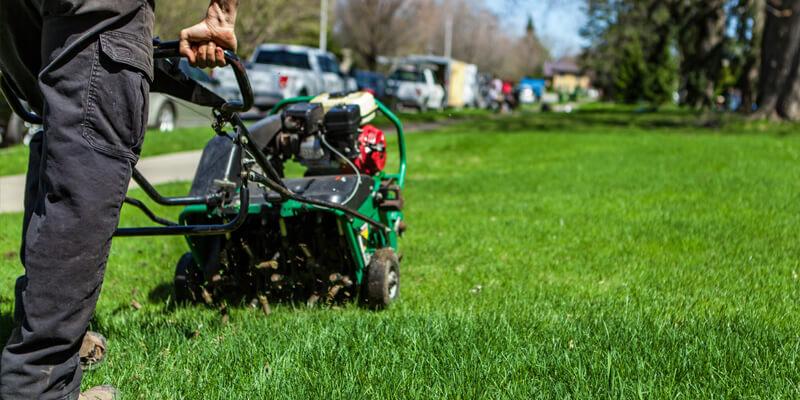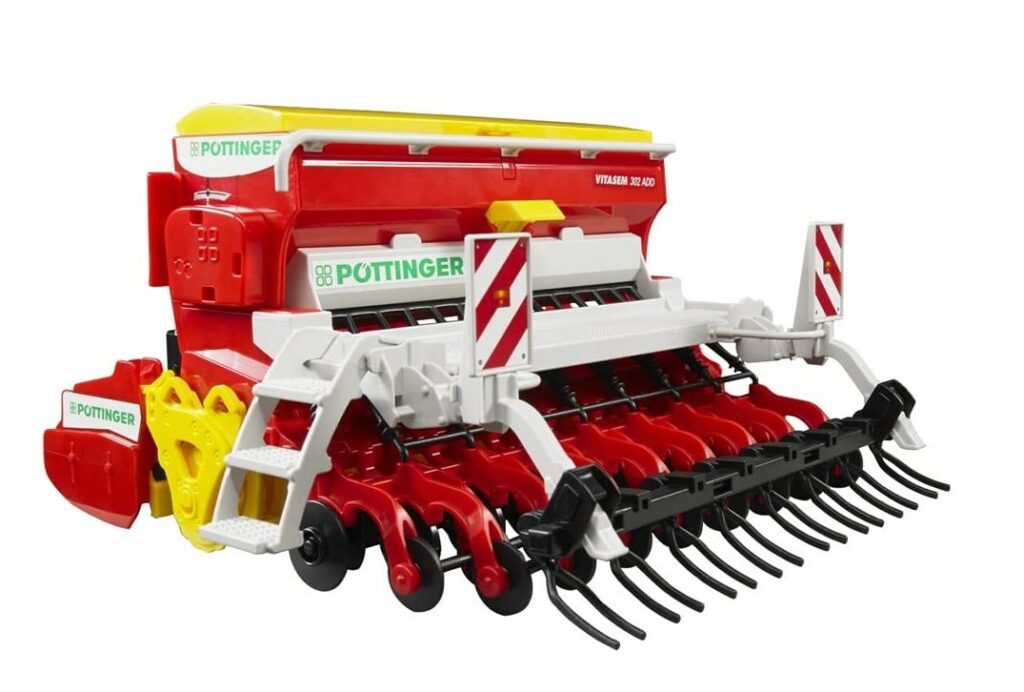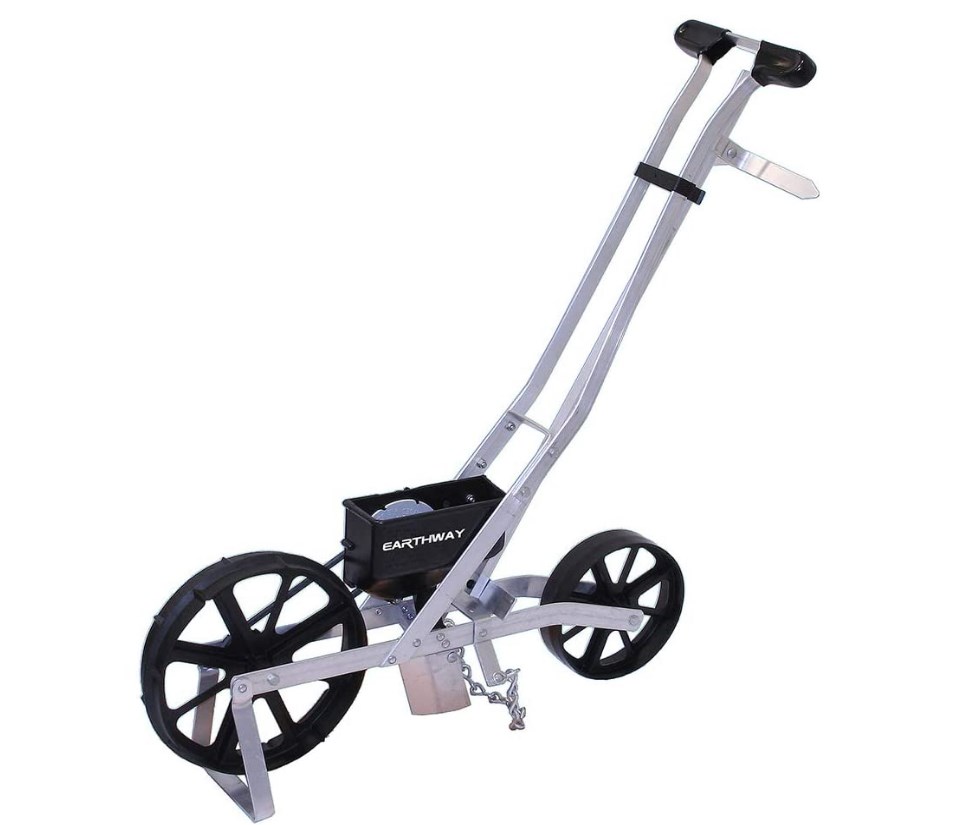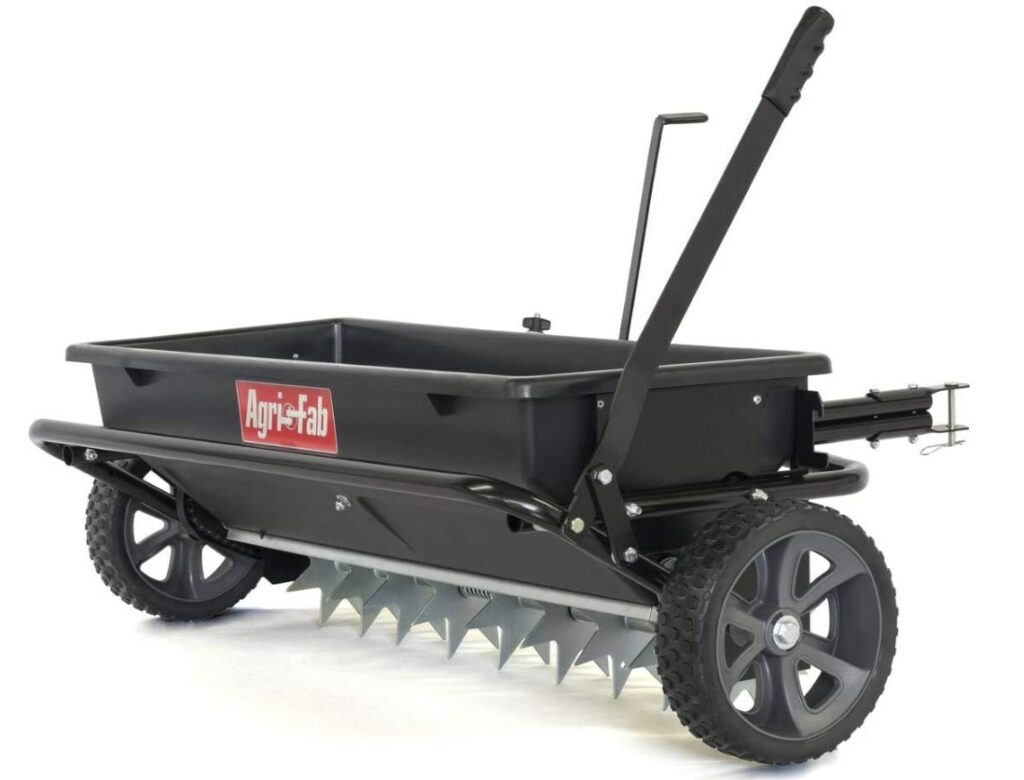- Best Cultivator Attachments Guide - December 23, 2021
- How to Find the Best Leaf Blower Attachment - December 23, 2021
- Best 21 Inch Lawn Mower Blade Options - December 18, 2021
There are many types of lawn equipment on the market, but today we will focus our comparison on Slice Seeder vs. Overseeder to see which is better!
Our exploration will touch on their features, differences, ease of use, pricing, as well as their advantages and disadvantages. We’ll also look at some alternatives available on the market for you to consider.
If you love thick, lush turf and you are ready to put in the work for a beautiful lawn, then Slice Seeder and Overseeder are two significant pieces of equipment that will help you achieve an eye-popping lawn!
Let’s begin our comparison by exploring the main differences you should expect from these two products.
Main Differences Between Slice Seeder vs Overseeder
The main differences between Slice Seeder vs Overseeder are:
- Slice Seeder creates furrows with its blades for precision seed dropping, whereas Overseeder doesn’t.
- Slice Seeder creates a uniform lawn bed for planting, whereas Overseeder drops seeds on your lawn as it is.
- Slice Seeder is designed to hammer seeds into the ground for better soil and seed contact, whereas Overseeder has a seed spreader that sprays seeds all over your lawn.
- Slice Seeder ensures all seeds are evenly planted, limiting wastage, whereas Overseeder leads to wastage and uses more seeds because not all sprayed seeds fall on an optimal growth spot.
- Slice Seeder, by design, allows the ground to be aerated during planting, whereas Overseeder usage requires the soil to be aerated first to enhance the chance of seed germination.
- Slice Seeder damages your lawn structure, whereas using an Overseeder maintains the aesthetic value of your lawn,
Exploring Slice Seeder and Overseeder features
To better understand how Overseeder compares to Slice Seeder, let’s focus on the following areas:
Aeration

When soil remains undisturbed for a considerable period, it becomes compact and hard, limiting the movement of water and nutrients to plant roots. It’s for this reason that aeration is vital before establishing your lawn.
Using an Overseeder as your chosen planting technique leaves the soil with little intrusion, if at all, while Slice seeding cuts through soil, creating furrows and improving the movement of water and nutrients to the seeds.
By design, Slice Seeder pokes holes into the ground, enhancing its aeration during planting and soil-seed contact. This shortens the distance of water and nutrient travel to the seed to promote germination.
Over-seeding, however, broadcasts seeds on the ground surface, decreasing the chances to get proper seed to soil contact, thereby resulting in a higher germination failure.
Using a Slice Seeder promotes proper rooting and stronger turf that can weather most elements. However, overseeding without aerating the soil before using an Overseeder leads to a poor rooting system for the germinating seeds, which gets easily destroyed by foot traffic.
Lawn Preparation
Unlike using a Slice Seeder, over-seeding your lawn using an Overseeder is straightforward. Apply a moderate amount of fertilizer to provide a growth accelerator for your seeds. Follow this with properly aerating the lawn to improve the flow of water and nutrients into the soil.
While a Slice Seeder does not require aeration before planting, Overseeders’ effectiveness depends on properly aerating your lawn to enhance the chances of your seeds falling in the tiny holes formed for better germination.
Weeding out your lawn before Overseeding using a Slice Seeder prevents cross-contamination. Unlike an Overseeder, Slice Seeder requires that both seeds and the fertilizer application be precise on a leveled lawn bed.
Despite their difference in planting approach, it’s essential to water your seeds until germination occurs in both over-seeding using Overseeder and Slice Seeder.
Weed Management
Even though over-seeding seems to have a decreased germination potential, it does not increase weed infestation. In fact, the thick turf chokes out weeds. In contrast, Slice Seeder may spread weeds across the lawn with its blades.
Risk of disease
Slice Seeder blades require more maintenance and cleaning after every use because they form a great breeding ground for shoot clogging, which increases fungus growth and buildup. Overseeder, however, does not have this problem.
Germination Rate
Seeds planted using Slice Seeder have higher germination potential because nothing except human activity will dislocate the seeds once hammered into the ground, unlike Oveseeder, which sprays seeds without a pre-planned dropping sport resulting in seed displacement.
Slice Seeder cuts through the soil, deposits the seed, and hits it into the ground for better seed and soil contact, thus enhancing water and nutrient absorption. On the contrary, Overseeder does not factor in the food requirement of the seed leading to increased seed death.
Comparing Slice Seeder vs Overseeder – Pricing
The price of an Overseeder depends on the brand and vendor you settle on. For a few hundred dollars, you can have a wide range of Overseeders perfect for your lawn. You can also get body parts of your worn-out Overseeder at a budget-friendly price.
TURFCO sells a simple Overseeder at $2,405, whereas a used TORO 8393 Overseeder in Ohio, USA goes for $4000.
In contrast, Slice Seeder is easily available on Amazon, with an EarthWay Precision Garden Seeder usually selling at a reasonable price. Of course, the price can vary from vendor to vendor.
Slice Seeder vs Overseeder – Ease of use
Slice Seeder has adjustable blades that you can manipulate to achieve the desired depth of planting and bed uniformity depending on the type of seed you intend to plant. In contrast, Overseeder deploys the use of broadcast spreaders to drop seeds on the ground surface.
The need to adjust blades and determine planting depth requires a little learning curve compared to the Overseeder usage, which is rather straightforward.
Pros and Cons
Overseeder

Pros
- The technique does not damage the seeds’ structure, thereby improving their growth rate.
- Does not interfere with both the soil texture and the rooting system of already growing plants.
- Helps in improving and repairing your lawn patch.
- It’s a better planting method for the warm season.
- Maintenance needs and costs are low.
Cons
- Over-seeding equipment is expensive.
- Broadcasted seeds can attract birds, turning your lawn into a hunting ground.
- External factors like birds, wind, and foot traffic may reduce the germination rate due to seed displacement.
- Requires higher watering frequency to enhance proper germination and growth.
- Over-seeding lacks uniformity of lawn growth.
- Without individual care about the growth chances of seeds, empty patches may remain on your lawn even after overseeding.
- The techniques require the use of a lot of seeds.
- This leads to wastage of seeds
Slice Seeder

Pros
- Slice seeder has a dethatcher that helps with planting depth adjustment.
- Enhances seed to soil contact, thus increasing germination rate.
- It’s easy to determine slicing depth depending on seed type.
- Reduced seed displacement.
Cons
- Likely to disturb the soil and rooting system of other plants if used in an area with already grown plants.
- Blades require better maintenance to avoid rusting
- Unclean blades form a breeding ground for diseases and fungus, which can be transferred to your new grass.
- Requires weeds to be removed before usage to avoid spreading such weeds across your lawn
- Destroy the aesthetic value of an already established lawn.
- Is costly
- May lead to damaging of the seeds when hitting them into the ground.
- Needs equal precision in fertilizer application as the seed plantation.
The best alternatives to Slice Seeder or Overseeder
Spike Seeder
If you are looking to save on time and cost on your lawn, using a Spike Seeder is the way to go. You can tow the tool behind a mower with both seeds and fertilizer evenly mixed in the spike trough.
The spikes can then be adjusted to the ground level and as you move your mowing machine, the spikes slice through the ground, dropping and dispersing your seeds and fertilizer.
The price of a Spike Seeder varies from one manufacturer to the next, though you can usually get one for just under $500.
This price is justified by the equipment’s capacity to execute three functions of dropping seeds or fertilizer, spreads and slightly aerates the lawn. This is a significant feature if you want efficiency within a minimal time frame!
Manual Seeder
Consider a Manual Seeder if you are on a budget but still want to achieve a great lawn. This equipment comes with a plug tray that drops up to 5 pieces of seeds from each cell. Its adjustable rollers are handy when using different seed sizes.
You can purchase a manual seeder for as low as $55 to over a hundred dollars, though different vendors sell them differently. The manual seeder is useful for its depth and spacing precision, which is important for lawn uniformity.
A manual Seeder is dynamic, giving you the choice of adding more accessories depending on the seed type. You can easily adjust up to seven seed plates.
Frequently Asked Questions about Slice Seeder and Overseeder
Answer: While the Slice seeder cuts through the soil to form furrows and then hammers in seeds into the slits, the Overseeder, through its broadcast spreader, throws seed on the surface to grow.
Answer: Despite the precision and uniformity of the slicer, the hammering of seed into the ground can cause structural damage. However, comparing this limitation to the germination rate slice-seeding has, it’s a risk worth taking.
Answer: Since over-seeding does not involve any intrusion into the soil structure, aerating will not only supply the seeds with water and nutrients, it will also provide the germinating roots a better hold of ground for growth.
Conclusion – Which Planting Technique is the Best?
Lawns, like any investment, require a hands-on approach in ensuring that you get value for money. A lackluster approach will not only cost you a lot of money in the long run, but it will also leave you with unsightly clumps of grass that water down the complete outlook of your home.
Which is Best? Slice seeders are perfect for uneven or patchy growth lawns due to higher germination levels. In contrast, an overseeder is best for thickening a thin lawn while protecting the existing healthy grass.
Before settling on either Slice Seeder or Overseeder, determine what your goals are! Factor in the project’s cost, the time required, the type of seeds to be planted, and the size of your lawn.
Growing a lawn from scratch, or if you need to revamp your lawn after unfavorable weather, heavy foot traffic, or weed invasion, slice seeding will give better results.
However, if your intention is to patch up on bare space within a properly growing lawn, or if your turf simply needs a facelift over a small stretch of land, then over-seeding will be ideal. Of course, you can include this technique in your maintenance process to ensure you keep your lawn looking lush!
Looking into your cost to determine your preferred equipment, consider how much you need to spend on your tool of choice, vis-à-vis the area of usage. If you have a small lawn and want to use an Overseeder, you may not be making a financially sound decision because of the high cost of an Overseeder compared to a Slice Seeder. A golf course could be more economical!
The germination rate of a lawn planted using Slice Seeder is higher and that probability aces out using an Overseeder. Leaving the fate of seeds to birds and other external factors like the wind do not sound ideal, though it may be useful as a weed control method. A thick turf usually chokes out the weed, and an Overseeder will help you achieve that.
Further Reading on Lawn Maintenance:


